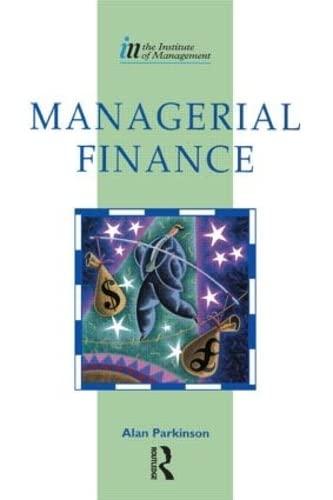Question
You are considering an investment into an income producing property (lets call it Property A). The acquisition price is $227,500 and you can finance it
You are considering an investment into an income producing property (lets call it Property A). The acquisition price is $227,500 and you can finance it with a 70% loan to value ratio mortgage with a 6% annual interest rate. This will be a fixed-rate mortgage with constant monthly The broker provides you with the following (incomplete) information about Property A. You determine that you will make this investment if it yields an after-tax internal rate of return on equity which is greater than 12%. You determine that you will hold Property A for three years and then sell at the end of year 3. The annual depreciation deduction you can claim on the property is $5,833.
You do not expect to make any capital expenditures.
The incomplete pro-forma for Property A appears below. Incomplete sections of the pro-forma are shaded grey.
Loan Terms
| Acquisition Price | $227,500 | (100% of the acquisition price attributed to the structure) |
| Loan to value ratio | 70% | |
| Loan Amount | $159,250 | |
| Interest Rate | 6% | Annual Rate; Monthly compounding |
| Term to maturity; Amortization Term | 30 | years |
Additional Assumptions
| Annual Depreciation Deduction | $5,833 | (Assuming Straight line depreciation 39 years) |
| Ordinary Tax Rate | 30% | |
| Going-out capitalization rate | 10.25% |
Year 1 2 3
| Effective Gross Income | $35,000 | $36,050 | $37,132 |
| less: Operating Expenditure | $ (12,250) | $(12,618) | $(12,996) |
| less: Capital Expenditure | $0 | $0 | $0 |
| Net Operating Income | $22,750 | $23,433 | $24,135 |
| less: Debt Service | $ (11,457) | $(11,457) | $(11,457) |
| Before Tax Cash Flow (Operations) | $11,293 | $11,975 | $12,678 |
| less: Tax Liability | (A) | $(2,465) | $(2,715) |
| After Tax Cash Flow (Operations) | (B) | $9,510 | $9,963 |
| After Tax Cash from Sale | $82,888 | ||
| Total After Tax Cash Flow | (C) | $9,510 | $92,852 |
A new tax law is expected to pass which allows the property to be depreciated over 15 years instead of 39 years (i.e., the cost recovery period is reduced by 24 years).
Without doing any additional computations, choose the correct option below:
Group of answer choices
A) This will increase the after-tax internal rate of return on property A.
B) This will decrease the after-tax internal rate of return on property A.
C) The change in the after-tax internal rate of return is ambiguous.
D) There is no change in the after-tax internal rate of return.
Step by Step Solution
There are 3 Steps involved in it
Step: 1

Get Instant Access to Expert-Tailored Solutions
See step-by-step solutions with expert insights and AI powered tools for academic success
Step: 2

Step: 3

Ace Your Homework with AI
Get the answers you need in no time with our AI-driven, step-by-step assistance
Get Started


